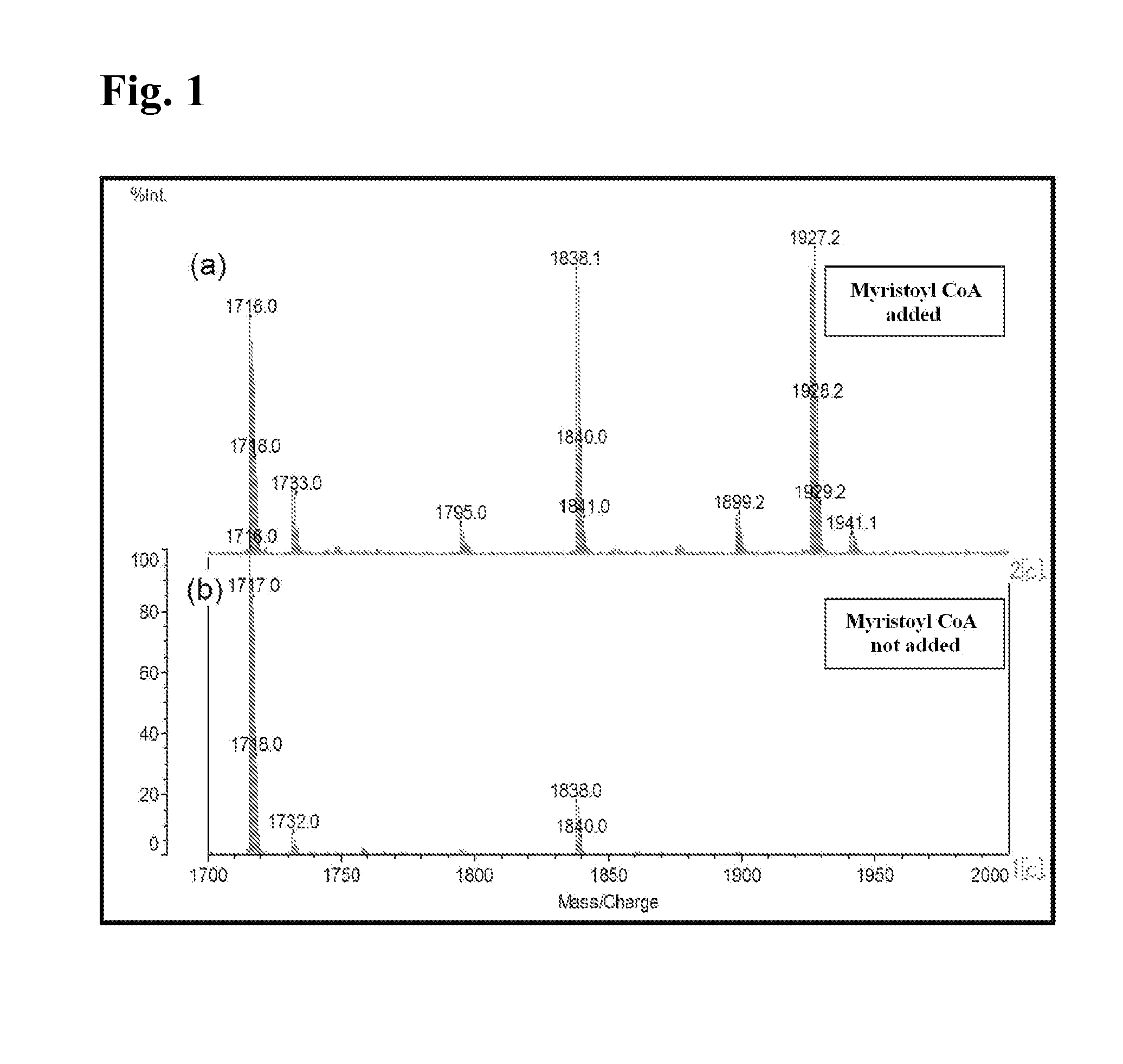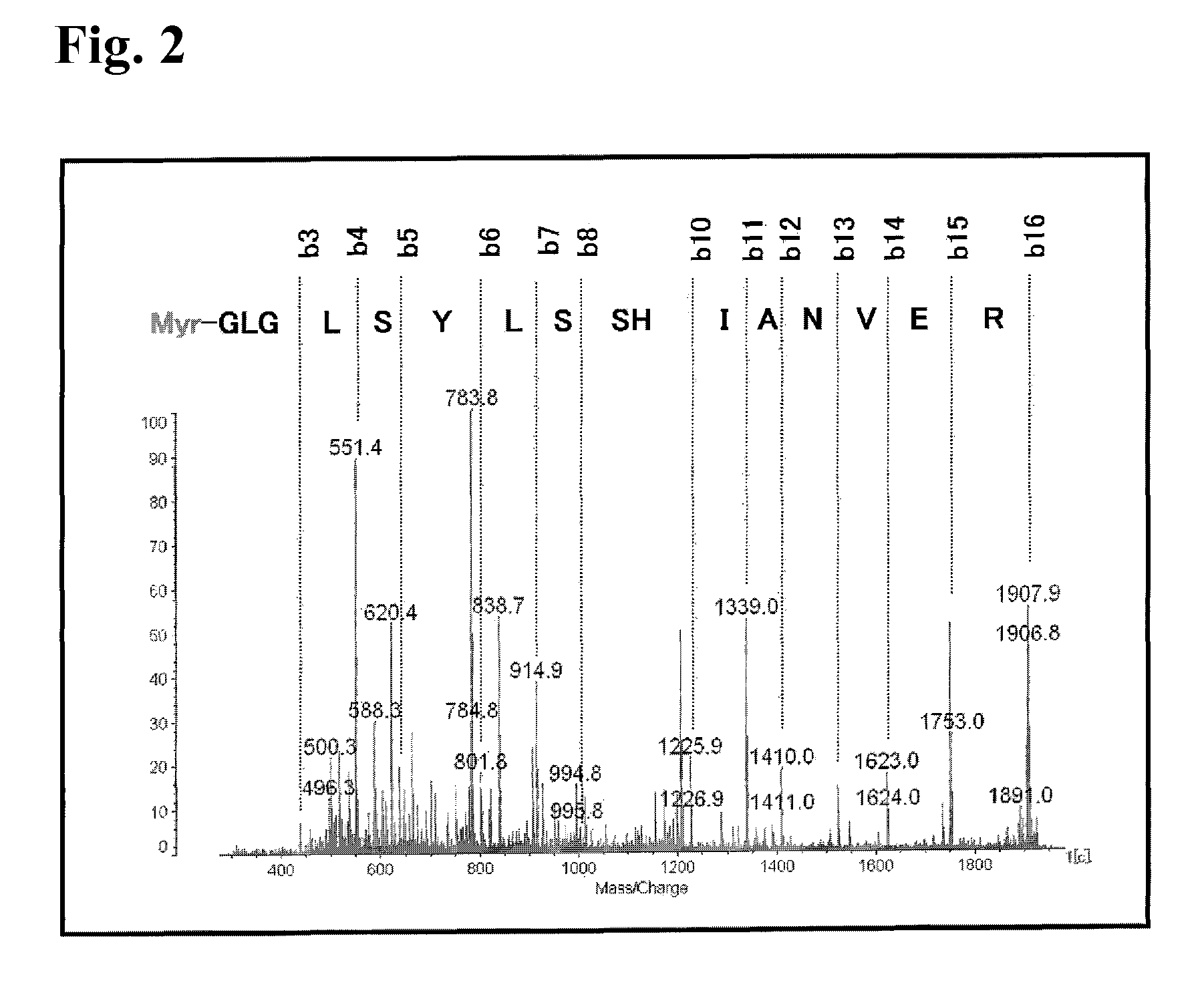Cell-free protein synthesis for controlling introduction of modification group into protein
- Summary
- Abstract
- Description
- Claims
- Application Information
AI Technical Summary
Benefits of technology
Problems solved by technology
Method used
Image
Examples
Embodiment Construction
[0036] The present invention relates to [A] a method of cell-free protein synthesis for obtaining a protein comprising a desired post-translational modification group introduced therein and [B] a method for controlling the introduction of a post-translational modification group into a protein.
[0037] [A] Method for obtaining protein comprising desired post-translational modification group introduced therein
[0038] The present invention provides a method for obtaining a protein comprising a desired post-translational modification group introduced therein. In this method, an arbitrary modification group is introduced into a protein by using a reaction solution for cell-free protein synthesis comprising as one of substrate components in a cell-free protein synthesis system, a substance having a desired group to be introduced as a post-translational modification group into an obtained synthetic protein.
[0039] This method is particularly usefully used when the desired group to be introd...
PUM
 Login to View More
Login to View More Abstract
Description
Claims
Application Information
 Login to View More
Login to View More - R&D
- Intellectual Property
- Life Sciences
- Materials
- Tech Scout
- Unparalleled Data Quality
- Higher Quality Content
- 60% Fewer Hallucinations
Browse by: Latest US Patents, China's latest patents, Technical Efficacy Thesaurus, Application Domain, Technology Topic, Popular Technical Reports.
© 2025 PatSnap. All rights reserved.Legal|Privacy policy|Modern Slavery Act Transparency Statement|Sitemap|About US| Contact US: help@patsnap.com



